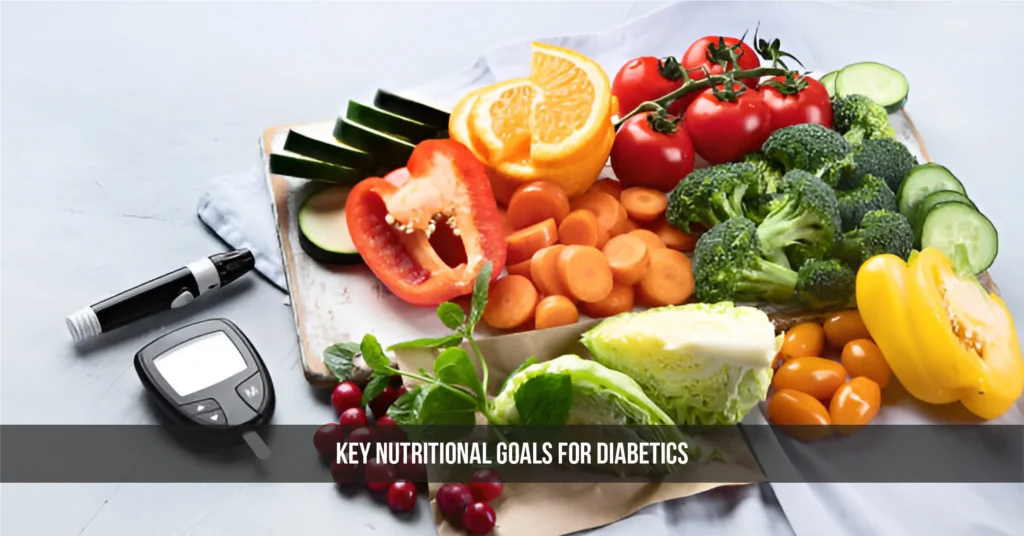What is a healthy, balanced diet for diabetes?
Did you know your food choices can impact your blood sugar levels more dramatically than many medications? With diabetes affecting 1 in 10 adults worldwide, understanding how to craft a truly balanced diabetic diet has become essential for millions. But here’s what most people don’t realize – a healthy diet for diabetes isn’t about deprivation or complicated rules. It’s about rediscovering the joy of eating real, wholesome foods that nourish your body while keeping your blood sugar stable.
I remember when my uncle was first diagnosed with type 2 diabetes. He thought he’d never enjoy meals again. But after learning how to balance his plate and time his meals, he discovered more flavorful dishes than ever before. That’s exactly what I want to share with you – how eating for diabetes can actually expand your culinary horizons while protecting your health.
Table of Contents
Understanding Diabetes and Nutrition
How Food Affects Blood Sugar
Every meal is like a symphony for your metabolism, with different nutrients playing distinct roles:
Carbohydrates are the lead violinists – they have the most immediate impact on blood glucose. But not all carbs perform the same way:
- Simple carbs (white bread, sweets) hit your system like a crescendo
- Complex carbs (whole grains, legumes) play a more measured, sustained melody
- Fiber acts like the conductor, slowing everything down to a healthier tempo
Proteins and fats are the cello and bass sections – they provide depth and richness to the performance, helping to moderate the carb effects and create better balance.
Key Nutritional Goals for Diabetics
Managing diabetes through diet focuses on three crucial objectives:
- Blood Sugar Harmony – Aiming for steady glucose levels between 80-130 mg/dL before meals and under 180 mg/dL after eating
- Weight Wellness – Even losing 5-7% of body weight can dramatically improve insulin sensitivity
- Heart Protection – Since diabetes doubles heart disease risk, your diet needs to support cardiovascular health too
The beautiful part? The eating pattern that achieves all three is essentially the Mediterranean diet – one of the most enjoyable and sustainable ways to eat.

Essential Components of a Diabetic Diet
Best Foods for Diabetes
Building your meals around these nutritional powerhouses makes diabetes management much easier:
| Food Category | Superstar Choices | Special Benefits | Serving Tips |
|---|---|---|---|
| Non-starchy vegetables | Spinach, kale, broccoli, peppers | Packed with nutrients, minimal impact on glucose | Aim for 2-3 cups daily, raw or lightly cooked |
| Lean proteins | Salmon, skinless chicken, eggs, tofu | Provide satiety without spiking blood sugar | 3-4 oz per meal (about palm-sized) |
| Healthy fats | Avocados, nuts, olive oil, flaxseeds | Improve cholesterol and reduce inflammation | 1-2 tbsp oil, 1/4 cup nuts per serving |
| High-fiber carbs | Berries, quinoa, lentils, sweet potatoes | Slow digestion and glucose absorption | 1/2 cup cooked grains or starchy veggies |
Pro tip: Keep washed, chopped veggies at eye level in your fridge – you’ll be 3 times more likely to eat them!
Foods to Approach With Caution
While no foods need to be completely off-limits, these should be consumed mindfully:
Sugar-Sweetened Beverages
- Why limit: Liquid sugar causes rapid blood sugar spikes
- Better choice: Infused water with citrus and herbs
Refined Grains
- Why limit: Stripped of fiber, they digest too quickly
- Better choice: Whole grain versions with at least 3g fiber per serving
Processed Meats
- Why limit: High in sodium and preservatives
- Better choice: Fresh roasted turkey or chicken
Trans Fats
- Why avoid: Increase heart disease risk
- Watch for: “Partially hydrogenated oils” on labels
Practical Meal Planning Strategies
Mastering the Plate Method
This simple visual approach takes the stress out of portioning:
- Vegetable Symphony (1/2 plate)
- Mix colors and textures
- Try roasting with olive oil and herbs
- Include both raw and cooked options
- Protein Performers (1/4 plate)
- Alternate between animal and plant sources
- Experiment with marinades and rubs
- Include fatty fish 2-3 times weekly
- Carb Companions (1/4 plate)
- Choose whole food sources
- Pair with healthy fats to slow absorption
- Time these for when you’re most active
Carb Counting Demystified
Understanding carbohydrates gives you more flexibility:
Basic Guidelines
- Women: 30-45g per meal
- Men: 45-60g per meal
- Snacks: 15-30g
Real-World Examples
- Breakfast: 1 slice whole grain toast (15g) + 1 cup berries (15g)
- Lunch: 1/3 cup brown rice (15g) + 1 small whole grain roll (15g)
- Dinner: 1/2 cup quinoa (20g) + 1 cup roasted veggies (5g)
Unexpected Carb Sources
- Milk/yogurt (12g/cup)
- Beans (20g/½ cup)
- Sauces/dressings (often 5-10g/serving)

7-Day Sample Meal Plan
Day 1
- Breakfast: Veggie omelet with avocado + 1 slice rye toast
- Snack: Greek yogurt with walnuts
- Lunch: Grilled chicken salad with olive oil dressing
- Snack: Hummus with cucumber slices
- Dinner: Baked salmon with asparagus and wild rice
Day 2
- Breakfast: Overnight oats with chia seeds and almond butter
- Snack: Hard-boiled egg + celery sticks
- Lunch: Turkey lettuce wraps with quinoa tabbouleh
- Snack: Cottage cheese with peach slices
- Dinner: Stir-fried tofu with mixed vegetables over cauliflower rice
(Continues through 7 days with varied meals and snacks)
Special Considerations
Conquering Cravings
When sweet cravings strike, try these satisfying alternatives:
- Chocolate craving? Try 1 square dark chocolate (85%) with 5 almonds
- Ice cream urge? Blend frozen bananas with cocoa powder
- Salty snack need? Roasted chickpeas with smoked paprika
Restaurant Survival Guide
Eating out doesn’t have to derail your progress:
Before You Go
- Check the menu online
- Have a small protein-rich snack to avoid overordering
When Ordering
- Start with a vegetable-based appetizer
- Ask for substitutions (extra veggies instead of fries)
- Request sauces/dressings on the side
Portion Control
- Immediately box half your entrée
- Share desserts
- Sip water throughout the meal
Alcohol Guidelines
If you choose to drink:
Smart Choices
- Dry wines
- Light beers
- Spirits with zero-carb mixers
Timing Matters
- Never drink on an empty stomach
- Avoid late-night drinking
- Hydrate with water between drinks
Lifestyle Factors That Complement Diet
Exercise Essentials
Physical activity is like a natural insulin booster:
Aerobic Exercise
- 30 minutes most days
- Brisk walking counts!
- Try after-meal walks to blunt glucose spikes
Strength Training
- 2-3 sessions weekly
- Builds glucose-storing muscle
- Bodyweight exercises work well
Stress and Sleep Synergy
Managing these often-overlooked factors:
Sleep Optimization
- Aim for 7-8 hours nightly
- Keep consistent sleep/wake times
- Create a relaxing pre-bed routine
Stress Reduction
- Practice mindful breathing
- Try progressive muscle relaxation
- Schedule regular “me time”

Common Myths About Diabetic Diets
Let’s bust some persistent myths:
Myth: You must eat special “diabetic” foods
Truth: These often contain questionable ingredients and aren’t necessary
Myth: Artificial sweeteners are required
Truth: Many people do fine with small amounts of natural sweeteners
Myth: You can’t enjoy cultural foods
Truth: Nearly any cuisine can be adapted with smart modifications
Myth: Eating frequently is mandatory
Truth: Meal timing should match your medication and personal needs
Advanced Nutritional Strategies
Intermittent Fasting Considerations
Some diabetics benefit from time-restricted eating:
Potential Benefits
- Improved insulin sensitivity
- Natural calorie reduction
- Simplified meal planning
Precautions
- Must coordinate with medications
- Not for everyone (consult your doctor)
- Stay hydrated during fasting periods
Personalized Nutrition
Emerging science shows:
- Different people respond differently to the same foods
- Continuous glucose monitors can reveal personal triggers
- Gut microbiome affects glucose metabolism
Putting It All Together
Creating your personalized diabetes diet:
- Start with the plate method foundation
- Adjust based on your glucose monitoring
- Gradually incorporate lifestyle factors
- Celebrate non-scale victories (energy, lab results)
- Allow for flexibility and occasional indulgences
Remember – perfection isn’t the goal. Consistency with flexibility leads to lasting success. What matters most is finding an eating pattern you can maintain happily for life.
Conclusion
Creating a healthy, balanced diet for diabetes isn’t about restriction—it’s about rediscovering the joy of nourishing your body with delicious, wholesome foods. Remember these key takeaways:
- Focus on quality – Choose whole, minimally processed foods whenever possible
- Balance is key – Combine carbs with protein, fat, and fiber at every meal
- Consistency matters – Regular meal times help stabilize blood sugar
- Personalization wins – What works for others might not work for you, and that’s okay
- Progress over perfection – Small, sustainable changes add up to big results
The most successful diabetes diets aren’t temporary fixes—they’re lifelong eating patterns that celebrate good food while protecting your health. Start with one or two changes from this guide, monitor how your body responds, and gradually build from there.
Also Read: 10 Types of Sugar and the Best Way to Use Them
FAQs
Can I ever eat sweets if I have diabetes?
Absolutely! The key is moderation and timing. Enjoy a small portion of dessert with your meal rather than alone, and account for it in your carb count for that meal. Dark chocolate (70% cocoa or higher) is actually a great occasional treat because it’s lower in sugar and rich in antioxidants.
Are artificial sweeteners safe for diabetics?
Most are generally recognized as safe, but they affect people differently. Some may still trigger insulin responses or cravings. Natural options like stevia or monk fruit might be better choices. Personally, I find reducing sweetness overall makes healthy eating easier in the long run.
Is the keto diet good for diabetes?
It can help with short-term blood sugar control and weight loss, but long-term sustainability is questionable. A modified low-carb approach (50-100g daily) often works better for most people, allowing for more vegetables and some whole grains.
What’s the single most important dietary change I can make?
If I had to pick one, it would be eliminating sugary drinks. They provide empty calories and cause rapid blood sugar spikes without any nutritional benefit. Switching to water, unsweetened tea, or sparkling water can make a dramatic difference.














Post Comment